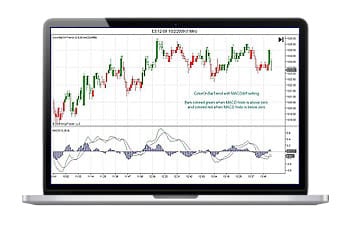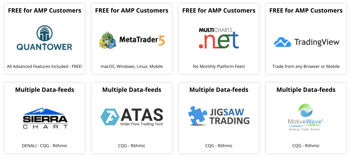History of Futures Market
The history of futures trading is, in a sense, two histories, both focused on how people have tried to improve the effectiveness of the commercial marketplace. The early story is a tale of how people in an agrarian society used forward contracts (agreements to buy now, but pay and deliver later) as a means of getting farm commodities efficiently from producers to consumers, at established prices and delivery terms, and how those forward contracts evolved into futures contracts. The present day story explains how the futures industry reinvented itself in the latter part of the twentieth century, essentially by redefining the meaning of commodity, so that it could accommodate the needs of complex financial markets in a society whose economy was no longer based primarily on agriculture.
The Early Story
Commodity markets have existed for centuries around the world because producers and buyers of foodstuffs and other items have always needed a common place to trade. Cash transactions were most common, but sometimes forward agreements were also made deals to deliver and pay for something in the future at a price agreed upon in the present. There are records, for example, of forward agreements related to the rice markets in seventeenth century Japan; most scholars agree that forward arrangements actually date back much farther in time.
The immediate predecessors of futures contracts were to arrive contracts. These were simple agreements to purchase designated goods when they arrived by ship, and they were used for centuries when shipping was the primary mode of international trade.
The first organized grain futures trading in the U.S. began in places such as New York City and Buffalo, but the development of modern futures, which are a unique type of forward agreement, began in Chicago in the 1840s. With the construction of the railroads, Chicago began to emerge as a center for transportation between midwestern producers and east coast population centers. The city was a natural hub for trade, but the trading that took place there was inefficient and unorganized until a group of Chicago based business men formed the Board of Trade of the City of Chicago in 1848. The Board was a member owned organization that offered a centralized location for cash trading of a variety of goods as well as trading of forward contracts. Members served as brokers who facilitated trading in return for commissions.
As trading of forward contracts increased, the Board decided that standardizing those contracts would streamline the trading and delivery processes. Instead of individualized contracts, which took a great deal of time to negotiate and fulfill, people interested in the forward trading of corn at the Board, for example, were asked to trade contracts that were identical in terms of quantity, quality, delivery month and terms, all as established by the exchange. The only thing left for traders to negotiate was price and the number of contracts.
These standardized forwards were essentially the first modern futures contracts. They were unlike other forwards in that they could only be traded at the exchange that created them, and only at certain designated times. They were also different from other forwards in that the bids, offers and negotiated prices of the trades were made public by the exchange. This practice established futures exchanges as venues for price discovery in U.S. markets.
In contrast to customized contracts, standardized futures contracts were easy to trade, since all trades were simply renegotiations of price, and they usually changed hands many times before expiration. People who wanted to make a profit based on a fortuitous price change, or alternatively, who wished to cut mounting losses as quickly as possible, could offset a futures contract before expiration by engaging in an opposite trade: buying a contract which they had previously sold (or gone short), or selling a contract which they had previously bought (or gone long).
The usefulness of futures trading became apparent, and a number of other futures exchanges were established throughout the country in the decades that followed. The Chicago Butter and Egg Board was founded in 1898 and evolved into Chicago Mercantile Exchange (CME) in 1919. Futures exchanges also opened in Milwaukee, New York, St. Louis, Kansas City, Minneapolis, San Francisco, Memphis, New Orleans and elsewhere. Chicago, however, became the most influential and predominant location for futures trading in the U.S.
The Era of Financial Futures
Throughout the first seven decades of the twentieth century, the futures industry remained essentially as it had been focused on the trading of futures on agricultural products. But a remarkable change occurred in the industry in 1971, with the introduction of futures based on financial products.
A New Concept: Futures on Foreign Currencies
Until 1971, world currencies had been pegged to an international gold standard, but that year the gold standard was abolished and currency values were allowed to float. Leaders of CME recognized that a currency whose value was determined by market forces had become a commodity like any other, and therefore futures could be traded on it. There was (and still is) an enormous forward market for currency trading, but until then there were no exchange-traded, standardized futures on currencies. As with futures on agricultural commodities, currency futures offered an opportunity to hedge against risks in price changes, as well as to profit from changes in values. That year, CME formed the International Monetary Market (IMM), initially a separate exchange closely linked to CME, and hosted its first futures trades on foreign currencies.
The notion of trading futures on currencies was highly controversial. But the concept garnered credibility from the support of economist Milton Friedman, who pronounced that the IMM would enable the world to operate more smoothly and effectively. Friedman proved correct, and now currency futures have become an integral part of international finance.
Interest Rate Futures
For many people it is one thing to understand the agricultural futures markets and even currency futures, but quite another to begin to magine futures on interest rates. Like agricultural products and currencies, however, interest rates the price of money vary according to market pressures, and in this sense, they can also be viewed as a type of commodity. Since many businesses are subject to risk as rates change, the futures industry reasoned that interest rate futures could offer opportunities for hedging against rising or falling rates or capitalizing on rate changes, as did futures on other commodities. CME launched its first interest rate product in 1976 a 90-day U.S. Treasury bill futures contract and over the next six years it became CME most actively traded product.
CME then proposed trading futures on interest rates paid for U.S. dollars on deposit overseas dubbed Eurodollars and again broke new industry ground by making Eurodollar futures the first futures contract which did not feature an actual or physical delivery but rather used cash settlement. Cash settlement eliminated the difficulty of physically delivering interest obligations, such as Treasury bills or notes, and thereby expanded the range of products upon which futures could feasibly be traded.
Stock Index Futures
Like currencies, interest rates, and crop prices, stock index values also vary according to numerous market pressures. Changes in index values can positively or negatively affect businesses that depend on them, such as mutual fund companies and pension funds. Stock indexes, then, also fit into the expanded definition of commodity. In the early 1980s, stock index values had become the barometers of overall health of the stock markets, and stock index futures drew an immediate audience because they enabled people to trade the values of the market without having to own any individual shares.
CME launched its first stock index futures contract, the S&P 500 contract, in 1982. Stock index traders quickly learned that they could use the futures markets to hedge against falling prices and take advantage of rising prices. When a market move took place, traders could use index futures to either protect their investments or increase their position in the market without having to actually buy or sell stocks. Stock index futures are also appealing in that they are typically less costly and easier to buy and sell than buying and selling shares of hundreds or even thousands of stocks.
Quite clearly, trading futures on stock index levels was a far cry from trading on live cattle or corn. The futures industry, however, led by the innovative thinking at CME, had learned how to expand its markets and to meet the risk management needs of our complex, post-agrarian society.


